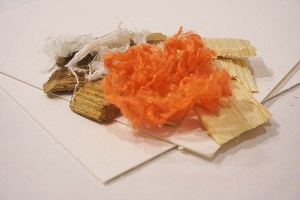The European GRETE project has come to an end. The aim of this research project was to develop new textiles from wood pulp. With partners from Finland, Austria, Italy, Spain and Portugal, it spanned many biobased sources and many technologies.

In the four years of its existence, the GRETE project has developed new and better technologies for wood pulp modification. It also improved cellulose dissolution and generation of high-quality textile fibres. Moreover, it succeeded to comply with sustainability requirements and market needs. Today, the project’s website writes, the textile industry is one of the most polluting industries globally. Whereas the demand for textile fibres is estimated almost to double by 2030, due to population growth. Nowadays, most fibres used for clothing are fossil-based synthetic fibres. With some of the natural fibres, there are equity and sustainability issues. Therefore, fibres made from wood pulp may be a gateway to a sustainable textile industry.
GRETE project: new technologies
A breakthrough sought after by the GRETE project is the use of novel liquid salts. These allow for chemical and enzymatic modification of Kraft pulp, sourced from softwood or hardwood trees. These modifications improve the fibres’ dyeing and fire retardant properties. For Europe, adoption of these technologies may mean the return of fibre production to the continent – at present, by far the majority of naturally grown fibres are being imported.

As the consortium writes on its website, the GRETE project intends to remove bottlenecks to the use of wood-based textiles. Among these bottlenecks are:
– the limited raw material base for the production of man-made cellulosic fibres;
– the far-from-optimal solvents available for these processes (many are explosive and/or toxic);
– water pollution caused by existing fibre treatment and dyeing technologies.
The consortium seeks to overcome these bottlenecks by innovative technologies. Its success would mean an enlargement of the product range of cellulosic fibre industries.
Lower environmental footprint
As may be obvious from these remarks, the GRETE project aimed to develop new ionic liquid (IL) solvents. They should be hydrolytically stable and recyclable; but still have a good dissolution capability for cellulose, and be readily recyclable. The object is of course to produce high-quality textile fibres. Using technologies that use little water, allowing for a sizeable reduction in the environmental footprint of our garments.
The GRETE project has resulted in 3 master thesis, 5 peer-reviewed publications, 3 manuscripts that are under review in peer-review journals. Moreover, 4 additional papers are currently under preparation. And, we hope, it has resulted in industrial opportunities for the participating industries. The project’s press releases tell us very little about this aspect. That aspect is, we assume, an industrial secret. Let’s hope the results were fruitful.
Interesting? Then also read:
Wood biorefinery has an enormous potential
Fibres of the future 2: cellulosic fibres from wood
Difficulties in lignin valorization
